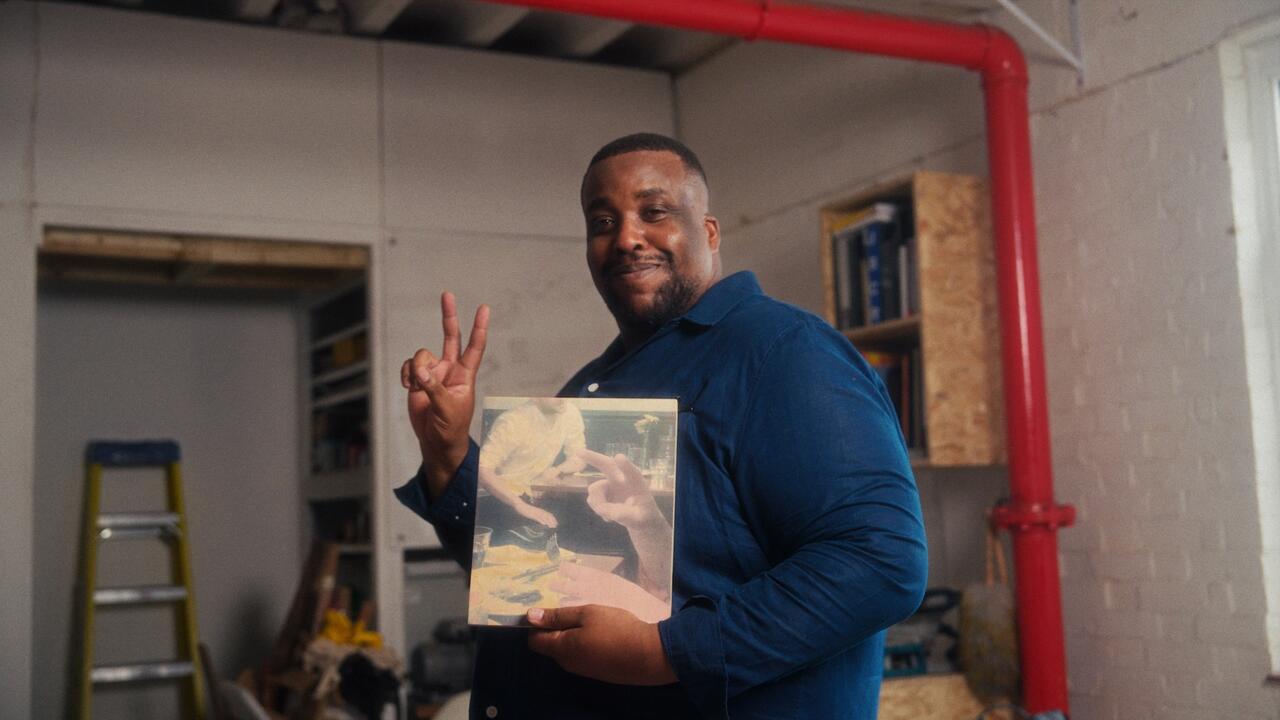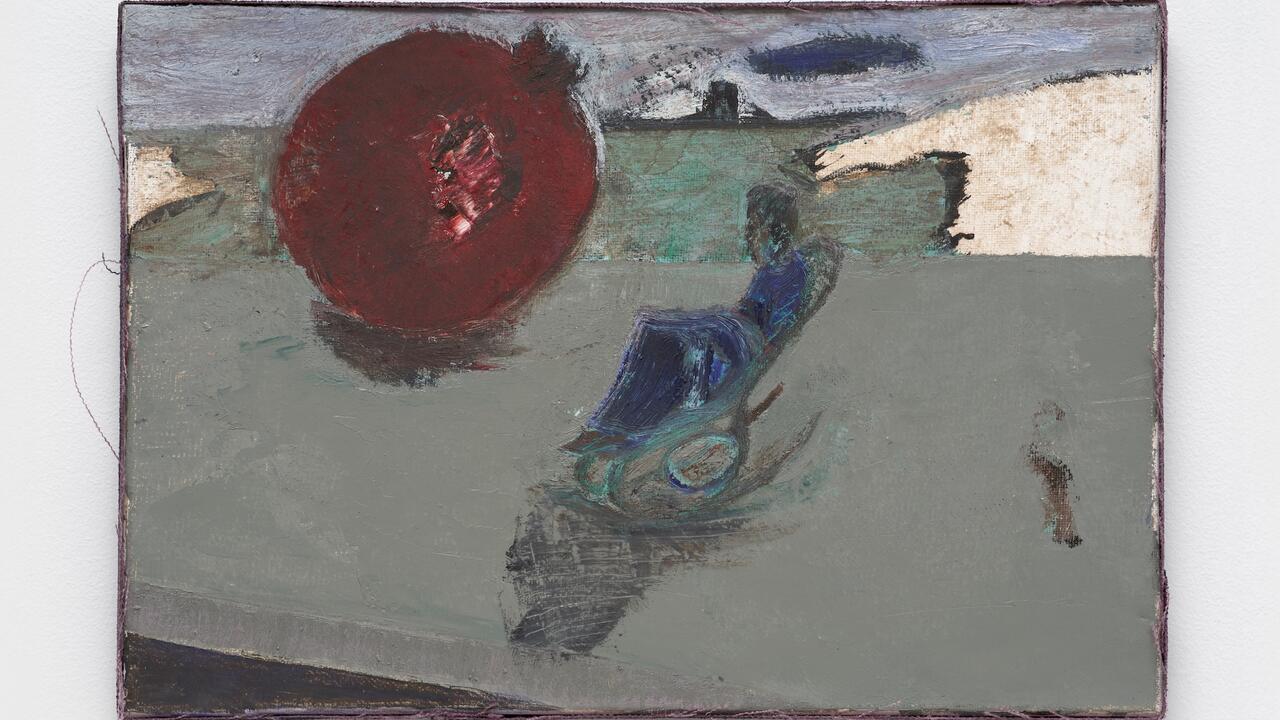Johannes Wohnseifer
Mies van der Rohe's Villa Tugendhat (1928-30) was used recently as the set for a German television advertisement for Warsteiner Pilsnerbeer. His 1929 Barcelona World Expo Pavilion was similarly used for a new energy company called 'E-on'. The architect's Minimalist design, paired with precious materials, such as onyx or gold-dipped steel, can apparently be read today as a green light into a future of hedonism and merged multinationals.
This is the context for Johannes Wohnseifer's transformation of a small model of the Barcelona Pavilion, entitled Zur gelben Möwe (To the Yellow Seagull, all works 2000). Mounted on a plywood plinth, the simple addition of a characteristic roof with red shingles converts van der Rohe's construction into a McDonald's branch, complete with the company's logo. This kind of cultural transformation of classic landmarks of media, art and archi-tectural history into transmitters of marketing is a leitmotiv of Wohnseifer's show 'This Night Worldwide'. 'This Night' is also the name of Rainer Werner Fassbinder's first, and forgotten, Super-8 film, shot in 1966. The idea of cashing in on the early work of a legendary director reflects current three-second advertisements which, in turn, almost always displace the products they should be advertising.
Wohnseifer simulates, on different levels, the needs of a global market. He created a website, the sine qua non of contemporary culture, to complement his exhibition. The crossover from High Art to club culture was provided by an LP of subdued dance music by Thomas Schaeben and Heiko Voss. The cover is decorated with a photo of an American Stealth bomber, an old familiar brought in to bat every time a local conflict becomes a sticking point for the world economy. Another part of the comprehensive merchandising strategy was an investigative booklet entitled This Night Worldwide - The Book, in which examples of internal instructions to Toyota workers, such as 'never criticize ideas', were transcribed.
Beside the reassigned van der Rohe pavilion, the show included seven paintings made in enamel and acrylic on aluminium. No Sleep till Bruchsal is a fiery red portrait of the terrorist Christian Klar, a member of the Red Army Faction, who was convicted in 1982 and is serving a life sentence at Bruchsal. One of the acrylics is inscribed with the words 'Bomb RTL TUI 2' - RTL is a television station, TUI a travel agent, and the title of the piece, Wir sind raus und wir sind stolz darauf ('We've got out and we're proud of it'), stems from a song by German punk rock outfit Tocotronic. The painted terrorist and the incitement to bomb become another element of radical chic, which the artist employs as a harmless (though perhaps nostalgic) label in the distribution disputes of old and new markets. Wohnseifer weaves a web of quotations, in which references to Pop culture are layered over references to the history of the old Federal Republic. In West Germany the decades after the World War II saw cold understatement and Internationalism (comparable to van der Rohe's architecture) as an almost-adequate reflection of the political self-understanding of the Republic. Even the Red Army Faction, whose terrorism in the 1970s was a sort of negative transparency for politics in the Republic, attempted to define how the Republic should be, and how it should think.
Often Wohnseifer delves into his themes to such an extent that conspiracy theories from far-flung
ends of the earth start to link up. A series of red and white traffic cones created a point of delineation, while emphasizing how quickly such symbols can be subject to a transfer of meaning: such cones were used as markers for the location of dead bodies after the Concorde crash near Paris.
In the end absolutely everything can become a Pop icon - even the noble shell of van der Rohe's Pavilion. Created as a memorial to so-called 'pure architecture', it takes on, through Wohnseifer's effective displacement, exactly the commodified form that Mies believed to have banished through perpetuity. Cue the advertising copy of Deutsche Bank: 'Out of ideas markets are made.'
















